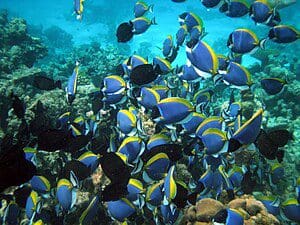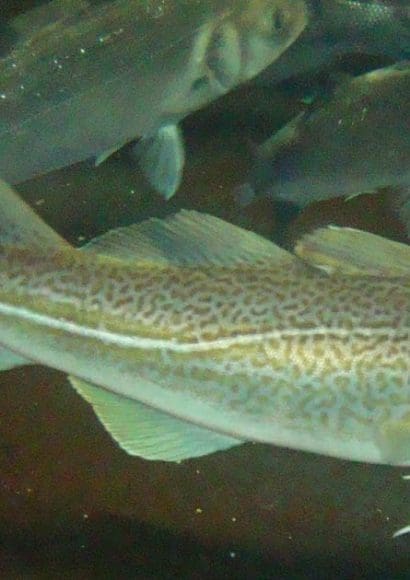
Cod, a versatile and beloved fish, holds a special place in culinary traditions around the world. From its capture in the icy waters of the North Atlantic to its diverse preparations in various cultural cuisines, cod has captivated the taste buds of countless food enthusiasts. In this article, we will delve into the fascinating world of cod, exploring how it is caught and prepared across different culinary cultures. Join us on a journey as we uncover the secrets behind this prized fish and the culinary traditions it has influenced. Whether you’re a seafood aficionado or simply curious about global gastronomy, prepare to be amazed by the rich heritage and diverse flavors that surround the captivating world of cod. Let’s dive in and discover the captivating story of how cod is caught and transformed into delectable dishes in kitchens worldwide.
Contents
Cod as a Fishing Resource.
Cod, scientifically known as Gadus morhua, is one of the most important and sought-after fish species in commercial fishing. It is widely recognized for its significant economic and cultural value, as well as its versatility in the culinary world. Cod is predominantly found in the North Atlantic Ocean, particularly in the waters of the northeastern United States, Canada, Iceland, and Norway.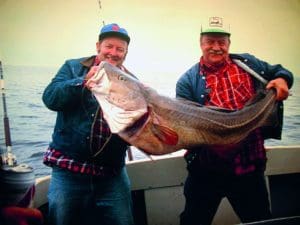
As a fishing resource, cod has been a target species for centuries, attracting fishermen from various regions due to its abundance and high demand. Historically, cod played a crucial role in the development of fishing communities and maritime trade routes. Its popularity led to the establishment of extensive fishing operations, with specialized vessels and techniques dedicated to its capture.
Traditionally, cod was primarily caught using longlines, handlines, and trawling nets. Longlines consist of a main line with multiple baited hooks, while handlines involve a single line with a hook. Trawling nets, on the other hand, are large nets dragged along the ocean floor to capture fish. These methods allowed fishermen to target cod in their natural habitats, such as rocky bottoms, deep-sea areas, or near underwater structures.
Cod in Traditional Cuisine.
Cod has long been a staple ingredient in traditional cuisines across various cultures. Its unique flavor, firm texture, and versatility make it a prized fish for countless classic dishes. Let’s explore how cod is prepared and enjoyed in traditional cuisine around the world.
In Portugal.
bacalhau (salted cod) holds a revered status. It is said that there are over 1,000 ways to prepare bacalhau dishes in Portuguese cuisine. From Bacalhau à Brás (a savory cod, potato, and egg dish) to Bacalhau com Natas (cod with cream), the Portuguese have mastered the art of creating rich and flavorful cod-based recipes.
Spain.
also boasts a rich tradition of cod dishes. In the region of Catalonia, Esqueixada is a popular salad made with shredded cod, tomatoes, onions, and olives. In the Basque Country, Bacalao a la Vizcaína features cod cooked in a rich tomato and red pepper sauce. These dishes highlight the regional diversity and creativity that cod brings to Spanish culinary traditions.
Moving north to Norway.
klippfisk (dried and salted cod) takes center stage. This preservation method dates back centuries and was crucial for long journeys at sea. Today, klippfisk is a key ingredient in Norwegian cuisine. Lutefisk, another Norwegian delicacy, involves rehydrating dried cod in a lye solution and serving it with various accompaniments.
In Iceland.
harðfiskur (dried fish) is a beloved snack made primarily from cod. The fish is air-dried, resulting in a crispy and flavorful treat. Harðfiskur is often eaten plain or served with butter, making it a simple yet delicious Icelandic tradition.
In addition to these regions, cod plays a significant role in the culinary traditions of many other countries, such as England, France, Italy, and Brazil. Each culture has its unique preparations and recipes that showcase the versatility of cod in traditional dishes.
Cod in Contemporary Cuisine.
Cod continues to be a versatile and sought-after ingredient in contemporary cuisine, where chefs and food enthusiasts are constantly pushing boundaries and exploring innovative ways to showcase its flavors. Let’s delve into the world of cod in contemporary cuisine and discover the exciting culinary trends surrounding this beloved fish.
In modern kitchens, chefs are experimenting with new techniques and flavor combinations to elevate the humble cod to new heights. From fine dining establishments to trendy gastropubs, you’ll find creative cod preparations that tantalize the taste buds and challenge traditional culinary norms.
One notable trend is the fusion of global flavors with cod. Chefs are incorporating influences from various cuisines to create exciting cross-cultural dishes. For example, Asian-inspired preparations like miso-glazed cod or cod in a spicy Thai curry have become popular choices, blending the delicate flesh of cod with bold and vibrant flavors.
Furthermore, the trend of “nose-to-tail” cooking has extended to seafood, including cod. Chefs are utilizing different parts of the fish, not just the fillets, to minimize waste and maximize flavor. This may involve using cod cheeks in a delicate ceviche or preparing crispy cod skins as a crunchy and flavorful garnish.
Sustainability and responsible sourcing are key considerations in contemporary cuisine, and cod is no exception. Many chefs prioritize working with suppliers that adhere to sustainable fishing practices, ensuring the long-term viability of cod stocks. By doing so, they can offer diners a guilt-free dining experience while supporting the preservation of marine ecosystems.
Cultural Influence of Cod.
The cultural influence of cod extends far beyond its culinary significance. This remarkable fish has left an indelible mark on various cultures around the world, shaping traditions, festivals, and even social identities. Let’s explore the broad cultural influence that cod has had on different communities.
In many coastal regions where cod fishing has been a way of life for generations, the fish holds deep cultural and historical significance. Fishing communities have developed a strong bond with cod, with its abundance and availability shaping their livelihoods, traditions, and sense of identity. Festivals and events centered around cod fishing and consumption are celebrated with great enthusiasm, showcasing the cultural importance of this fish.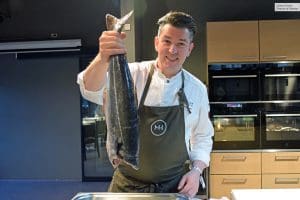
For example, in Norway, the annual Lofoten Fishery takes place, marking the arrival of cod to the region. This event brings together locals and visitors alike to witness the traditional fishing methods and participate in the festivities surrounding the catch. Similarly, in Portugal, the Festival do Bacalhau (Cod Festival) in Ílhavo pays homage to the country’s deep-rooted cod fishing tradition and culinary heritage.
Cod has also played a role in religious and seasonal observances. In many Christian countries, cod has been associated with religious holidays such as Christmas and Lent. During periods of fasting, when meat consumption is limited, cod became a popular alternative due to its availability and ability to be preserved. Traditional dishes like the Italian Baccalà Mantecato or the Swedish Janssons Frestelse have become symbolic of these festive occasions.
Health Benefits and Nutritional Value.
In conclusion, exploring the health benefits and nutritional value of cod reveals why it has become a popular choice for those seeking a nutritious and wholesome meal. The unique properties of cod make it a valuable addition to a balanced diet.
First and foremost, cod is a great source of high-quality protein, making it an excellent choice for individuals looking to meet their protein needs. Protein is essential for tissue repair, muscle growth, and overall bodily function. Cod provides a lean source of protein without the added saturated fats found in some other protein sources.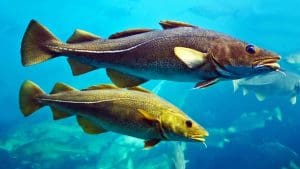
Cod is also a good source of various vitamins and minerals. It contains significant amounts of vitamin B12, which is essential for nerve function and the production of red blood cells. Additionally, cod is a good source of vitamin B6, which plays a role in brain development and function, as well as the metabolism of proteins, carbohydrates, and fats. It also contains notable amounts of vitamins A and D, which are important for vision, immune function, and bone health.
When it comes to minerals, cod is rich in phosphorus, which is crucial for bone health and energy metabolism. It also contains potassium, which helps maintain proper fluid balance and supports heart function. Additionally, cod is a good source of selenium, a trace mineral with antioxidant properties that supports the immune system.
If you’re a lover of food with this exquisite fish, I invite you to click here to discover 5 delicious recipes.

